
I’m Usa-chan, the “wheelchair x beauty” funny x model! In DisabilityLog, as a SNS influencer, I hope to provide lots of useful information for people with disabilities. I will also enjoy providing information about beauty, travel, sightseeing, music, photography, and other hobbies.
In this issue, we would like to talk about trains, buses, and monorails, which are the most common modes of transportation used by many wheelchair users.

I would like to see pictures of what wheelchair users actually do when they get on the train or on the bus.

Quite often, people in wheelchairs ask me, “How do people in wheelchairs ride trains and buses? I’m often asked. So I took pictures so that everyone can see who the wheelchair users are.

Oh wow!!! Thank you, Bunny ♡ I can’t believe you came to take pictures for all of us.

I ride the train a lot too, but not so much the bus, so that’s helpful for all of us.

I too rarely see cases of people in wheelchairs riding the bus and wanted to know how they do it on their commute to work. I’d appreciate it if you could tell us about it with pictures.
How to Ride a Wheelchair on a Train
Contact station staff at manned ticket gates
In my case, I also have a disability that causes me to tire easily, so I avoid taking the train during rush hour.
If the gap between the train and the platform is too large, I cannot lift my wheelchair up and get on by myself. Since I ride trains at similar times, I communicate with station staff in advance to ask them to put out ramps at the boarding and alighting stations.
JR.
If I always take the same route (commute) at a fixed time (unless there are others), they are able to accommodate me on time, but
However, when you suddenly go out of the prefecture or go to a distant place even within the prefecture, you may have to wait a little or be absent due to the above-mentioned relationship or other customers, and you may have to take a train two or three trains later (30-40 minutes waiting time).
Therefore, I try to leave home in advance (usually 20-30 minutes or more).
In some suburban areas in Tokyo and other prefectures, the gap between the train and the platform is narrower so that wheelchair users can get off the train alone without having to call a station attendant. This way, a wheelchair user can get on the train wisly (by raising the front wheels of the wheelchair) on his/her own.
This is a feature that is not supported by electric wheelchairs due to their heavy weight.
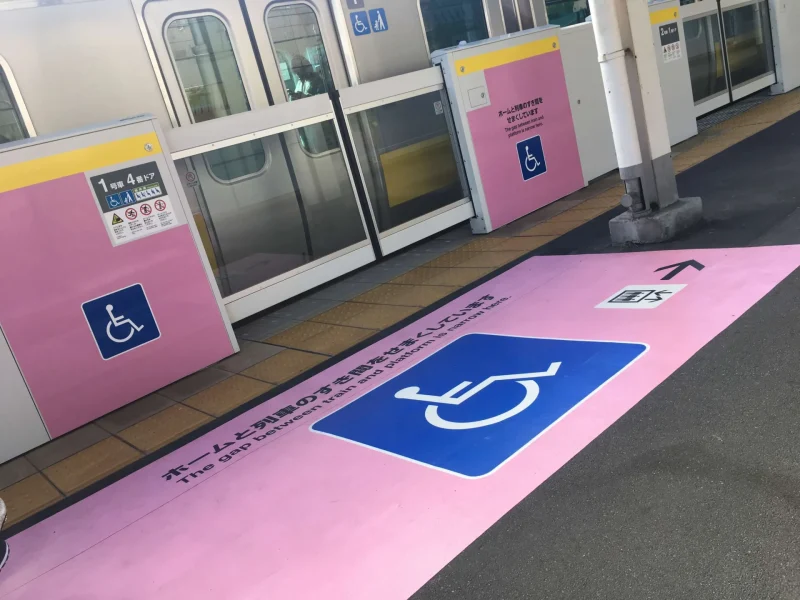
The pink mark is said to be the area it corresponds to.
taking a train, bus, etc.
There is a wheelchair space in the train like this.
It is nice because it is spacious. If you have a seat that also has a view of the window, it is nice to be able to see the scenery outside.

When boarding a wheelchair, station staff will push the wheelchair from behind and guide the wheelchair if necessary, or provide a ramp.
getting off

When disembarking from a wheelchair, if a station attendant offers you a ramp, you can get off by yourself.
When being pushed, the person may get off from the front or from the back, depending on his/her wishes.
In most cases, boarding and disembarking will be done after all waiting passengers have boarded and disembarked.
These days, some people feel sorry to have station staff help them, and above all, it takes time to contact both boarding and alighting stations before boarding the train. That is very difficult and I am grateful to you for providing the facility to have the gap between the train and the platform eliminated so that I can get on and off the train by myself. This example is only in Tokyo and some surrounding areas, so I hope it will spread more.
This would make the world more friendly to the elderly, the injured, those who have difficulty walking, and baby strollers.
What is a little disappointing is that at large stations, the station information is outsourced to other companies, so there is a lack of communication, and sometimes people are forgotten after waiting for several tens of minutes or are not allowed on the train.
I would appreciate it if you could let people know that there are some things we are grateful for, but there are also some unfortunate things, and if you could eliminate the unfortunate responses in the future, I would be very grateful. This will lead to the new “barrier-free” system.
On the half side of the happy news, I would like to write about what I feel in the article when it gets closer to the relevant year and month, such as to what extent disabled people and caregivers will be eligible for the service.
How to Ride a Wheelchair on a Bus
The crew will come to you.

In my case, I always get on the bus at a certain time, and the bus driver knows this very well, so to my surprise, he gives me a ramp even before I come to the bus. Therefore, I am able to get on the bus in about (1) minute. That’s really kind-hearted. Thank you.
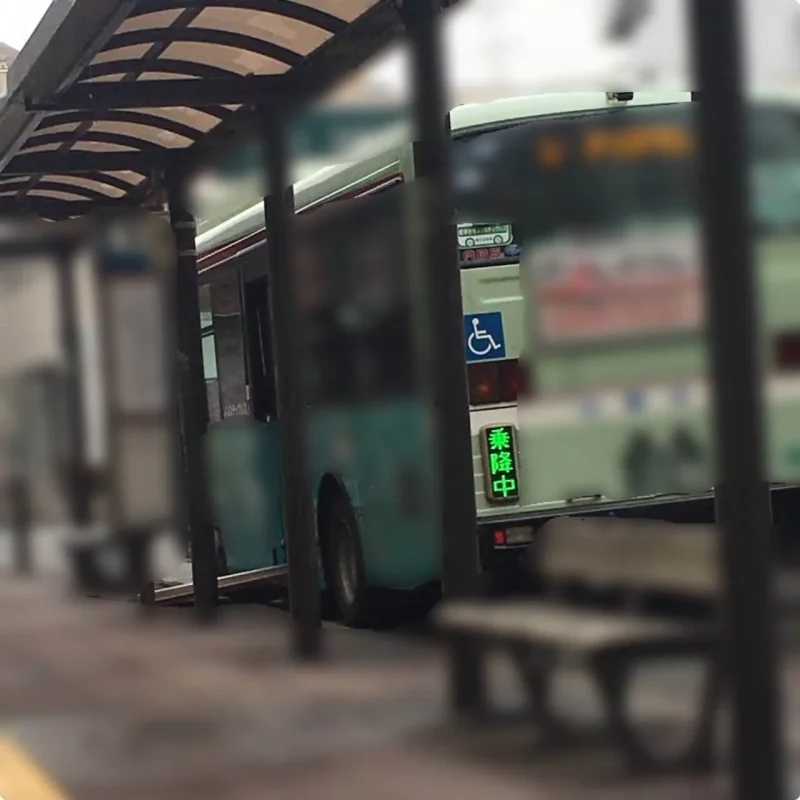
I am very impressed by the way everyone actively cooperates with each other, even though they are not in charge, such as the person who often meets up with several people and pushes my wheelchair onto the bus, or the person who puts the ramp out or puts it away.
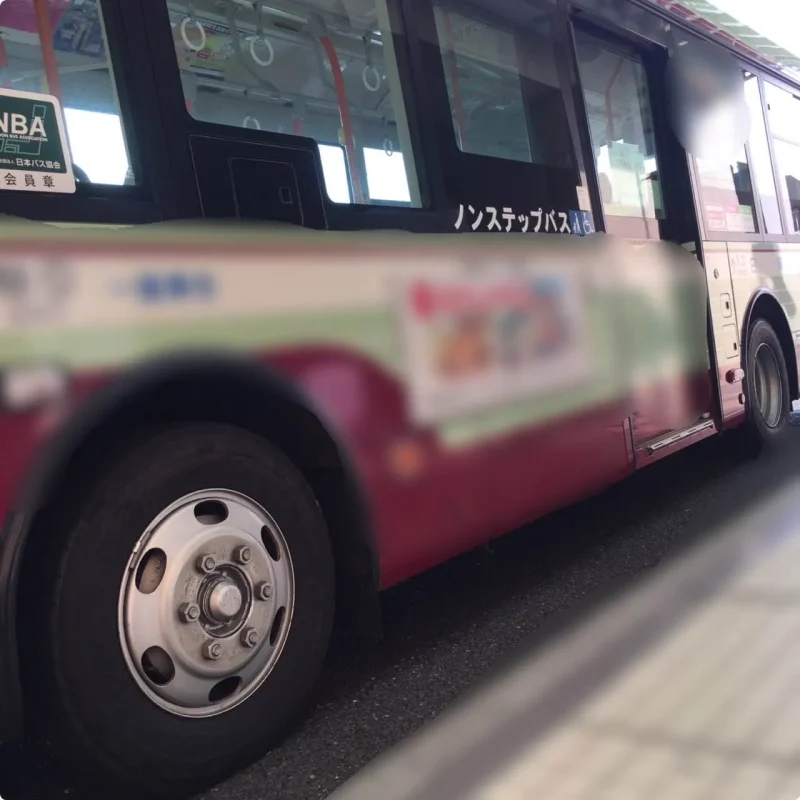
Non-step buses make it easier for those who walk to get on because of the low height when getting on.
boarding a train, bus, etc.
They are talking about a ramp that can be easily folded from the original so that wheelchair users can get on the bus and the driver can easily get out.

The bus driver will put out a ramp and push your wheelchair from the back.
We are grateful that the handrails are also provided.
●About the place to ride
Only the wheelchair seats are folded in two to accommodate wheelchairs.
There are belts to secure the wheelchair, but since I use the bus every day and it takes a long time, I only use the brakes on the wheelchair and do not use the belts.
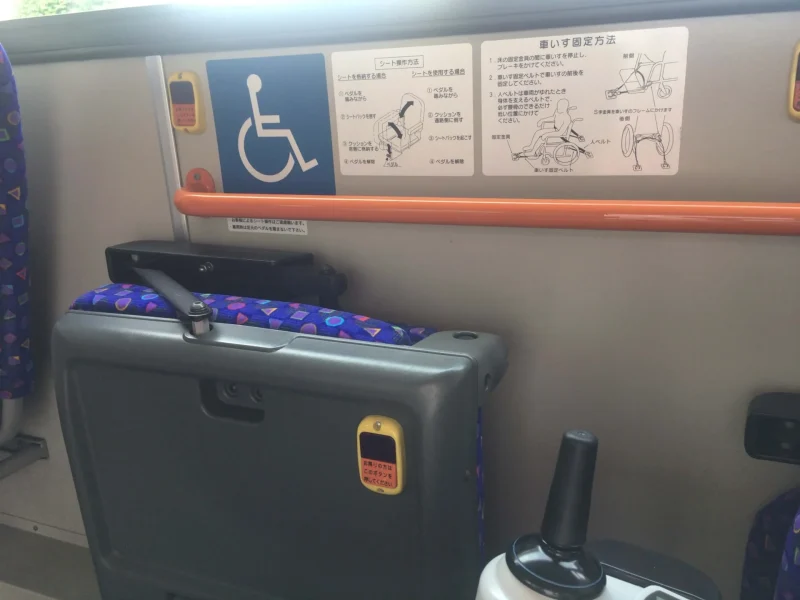
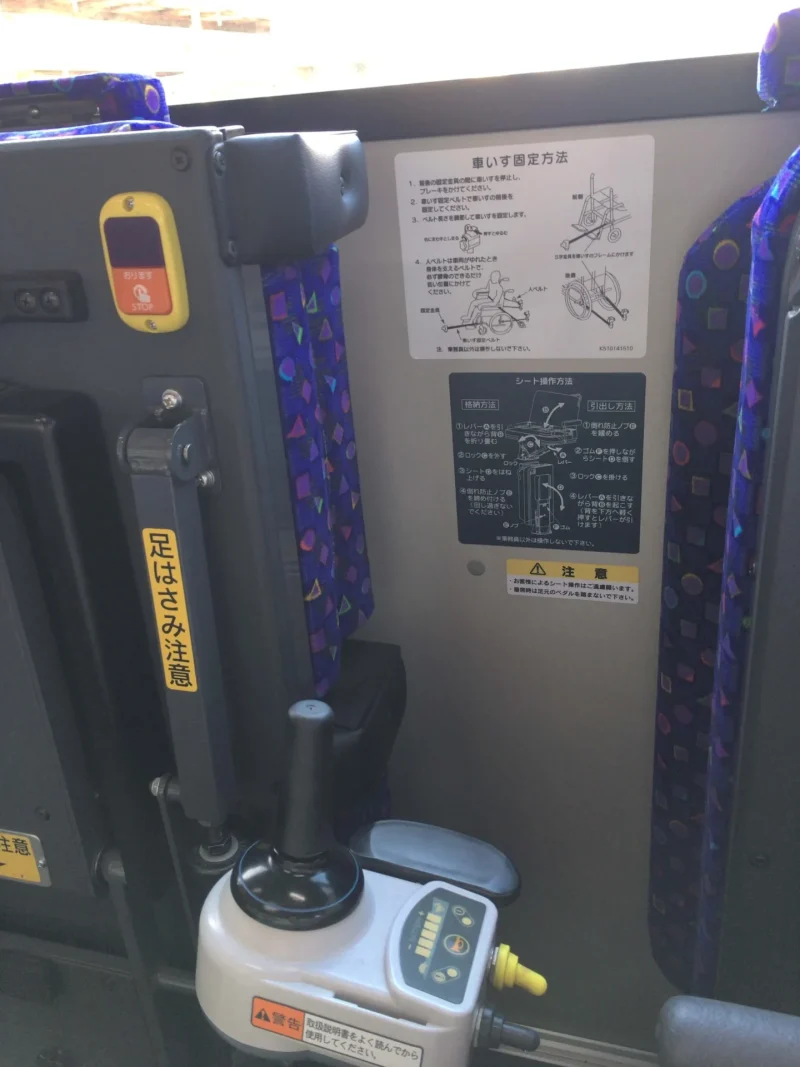
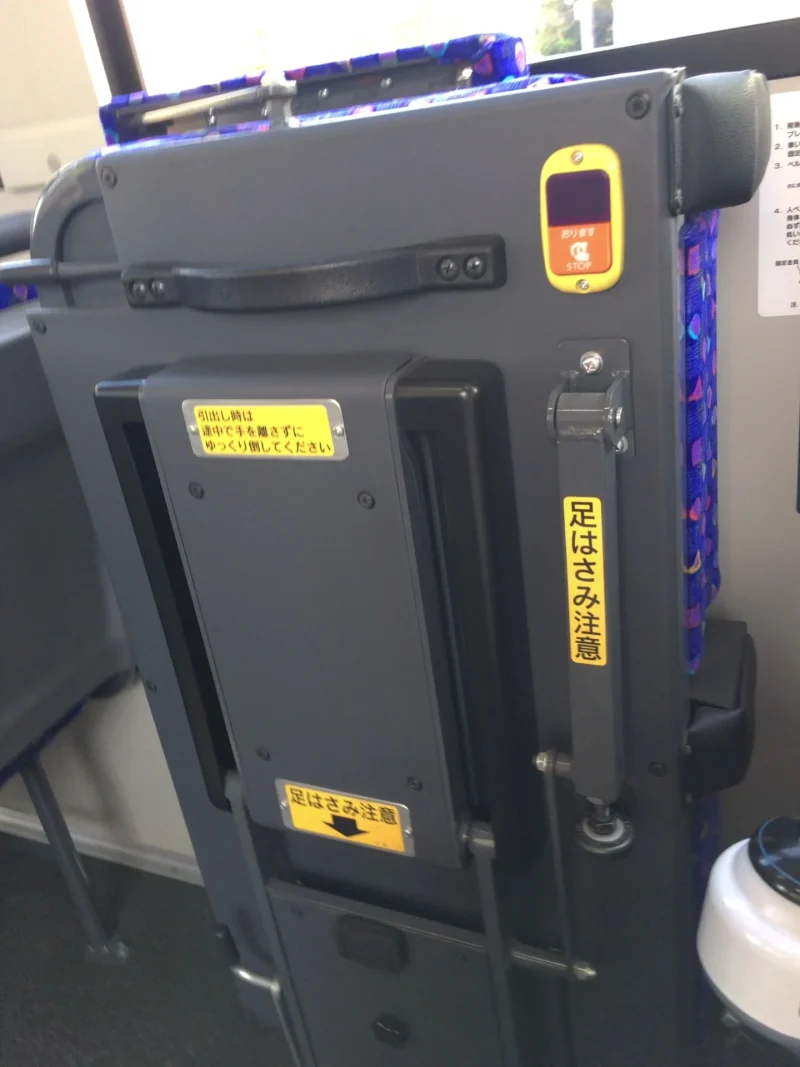
getting off
The bus driver will bring out a ramp and unload the wheelchair from the back.
When I had a short wait between the bus and the train, the bus driver would say, “Please wait while I drop off the wheelchair passenger first. I was very grateful to the bus driver who immediately dropped me off first.
I think in most cases, I would be the last one to get off the train.
Riding a wheelchair on the monorail
Call station staff at manned ticket gates
Tell the station staff at the manned ticket window where you want to ride from and to where.
Take the elevator and wait on the station platform.

(2-3 minutes) After a few minutes, the crew will come to you.

I am very grateful that the waiting time is the same as a normal healthy person and it takes only a few minutes.
taking a train, bus, etc.
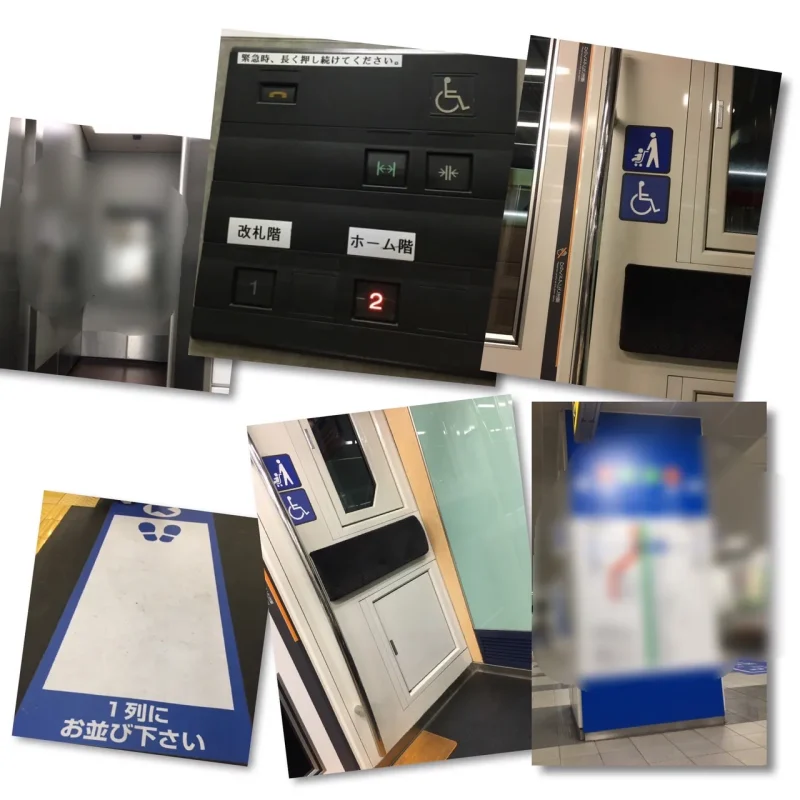
There is a station attendant on the way to the station, so the monorail supervisor will put out a ramp and push the wheelchair from behind.
getting off
The monorail driver will put out a ramp and push your wheelchair from behind.
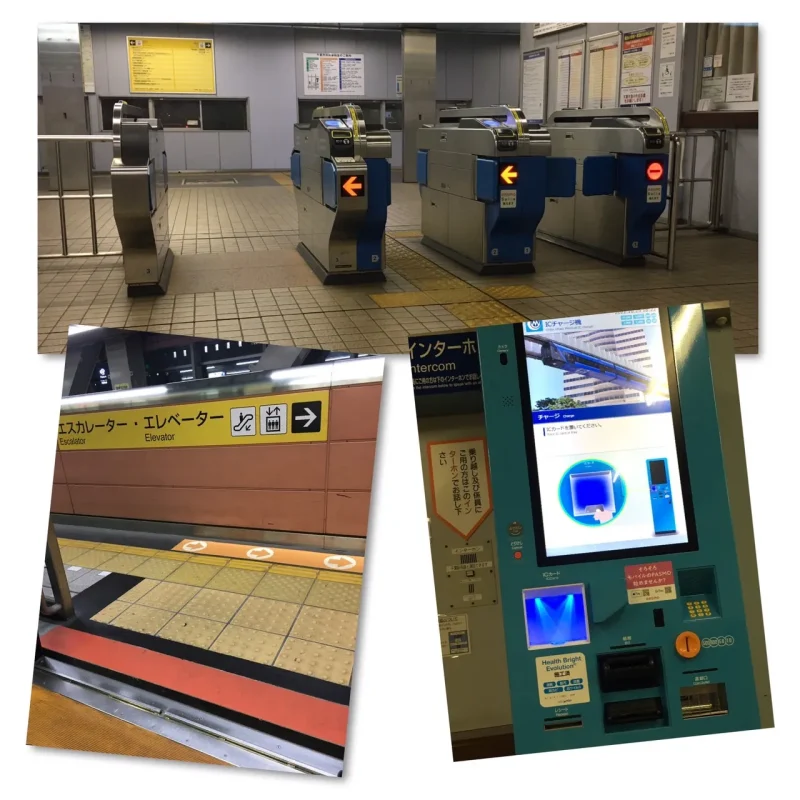
Monorail is very quick to respond.
summary
◆How to ride a train, bus or monorail with a wheelchair
- If you call a station attendant at a manned ticket gate, he or she will come to you, although it may take a little time.
- They will bring out a ramp [bus, train].
- There is a button that a person in a wheelchair can reach [Bus].
The following is a summary of the barrier-free conditions of public transportation for people in wheelchairs. Living in a wheelchair is often inconvenient and troublesome when going out anyway. Recently, trains and buses have been made barrier-free, and the problems wheelchair users face have been gradually improved.
In the previous issue, we mainly included “time,” “weather,” and “choosing a place of employment,” which can be troublesome when riding a train in a wheelchair, so please also see the post “Using Public Transportation for People in Wheelchairs” as well.
In Japan, there have been many places where barrier-free facilities have not yet been installed, such as train stations and buses. Barrier-free facilities began to be installed rapidly around the year when it was decided that Japan would host the Tokyo Olympic and Paralympic Games (2020).
However, it is often difficult to know whether the new barrier-free facilities really solve the problems of people in wheelchairs until they try them.

How long does it take to get on the train, bus, or monorail that I use in my daily life, such as commuting to work? It still takes a certain amount of time when the person or means of conveyance, such as station staff or bus drivers, changes.

When I take the JR train, I leave home early because I have to count backwards from the time I want to take the train and get on the train well in advance. It is quite difficult. Other companies have made it possible for wheelchair users and people with disabilities to get on the trains with priority by having security guards near the elevators to make it difficult for normal people to get on. I would be happy if the rules within the company and people’s awareness would change.

It’s really a problem…

For users who have trouble working or traveling, it would be very helpful to have considerations such as commuting options, staggered work schedules, and telecommuting.

Many wheelchair users are able to get around in their daily lives because of the support of public transportation providers, and we are very grateful for the guidance and ramps they provide to get on and off the bus.
If more wheelchair users could walk around town, we would have more barrier-free access.
Please look forward to my next article, which will describe “things related to priority seating”.

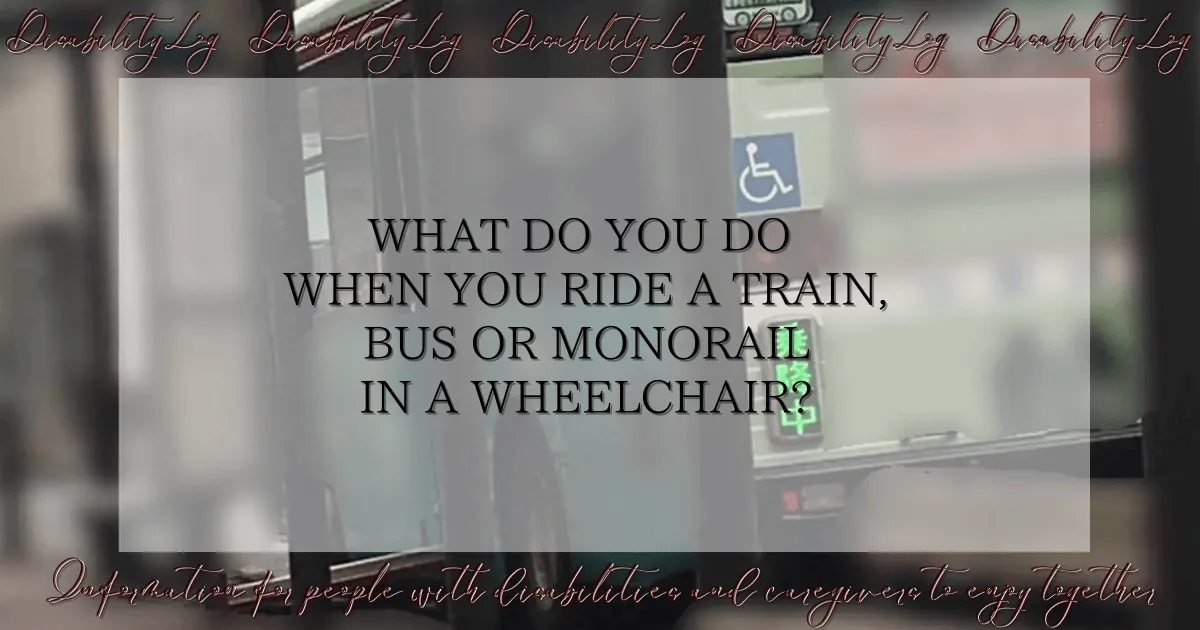













コメント